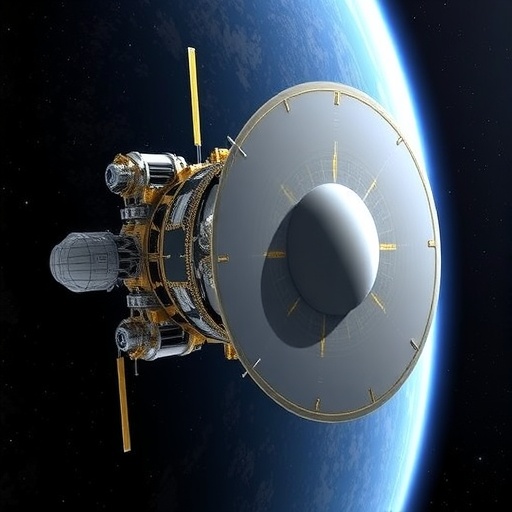The European Space Agency (ESA) has reached a significant milestone in the development of its groundbreaking mission known as Plato, which aims to uncover Earth-like exoplanets among the stars. Recently, engineers completed the assembly of Plato, finalizing its integrated sunshield and solar array module. This remarkable achievement marks a pivotal moment in the mission timeline as the spacecraft approaches its final testing phases prior to the anticipated launch in December 2026.
Plato, officially known as the PLAnetary Transits and Oscillations of stars, is designed to track and study terrestrial exoplanets located within the habitable zone of Sun-like stars. The completion of the spacecraft’s construction is not merely a technical accomplishment; it represents the culmination of years of collaborative effort between ESA, the mission consortium, and various industrial partners dedicated to bringing this innovative project to fruition. As the final component critical to Plato’s function was installed, project leaders reflected on the intense preparation and intricate engineering underpinning this sophisticated piece of equipment.
The assembly began shortly after Plato arrived at ESA’s Test Centre in the Netherlands. Engineers undertook the delicate task of fitting the sunshield and solar array during a meticulously orchestrated operation inside a clean room. The sunshield’s primary role is to protect the scientific instruments on board from the Sun’s harsh glare while the solar array generates electrical power essential for the spacecraft’s operations. This symbiotic relationship ensures that the spacecraft is both adequately powered and shielded, enabling it to conduct its scientific exploration with optimal performance.
During the assembly process, engineers employed specialized lifting equipment to handle the sunshield and solar panel module with precision. After successfully aligning the module with the spacecraft, it was securely mounted into place. The completion of this component signifies that Plato is not only structurally ready but also strategically positioned to undertake its mission of discovering exoplanets. Thomas Walloschek, ESA’s Plato Project Manager, emphasized the gratifying nature of this achievement, highlighting the collaborative spirit that has been a hallmark of the mission’s development.
Interestingly, Plato is engineered with a distinctive design tailored to accommodate a suite of advanced imaging technology. At its core, the spacecraft is equipped with 26 high-resolution cameras designed to meticulously monitor more than 150,000 bright stars in the quest for exoplanets. Each camera is crafted to detect subtle variations in stellar light intensity, revealing the presence of planets that might be obscured in the surrounding brilliance of their host stars. The cameras are engineered to function optimally at extremely low temperatures, approximately -80 degrees Celsius, to enhance their sensitivity and accuracy.
The role of the sunshield cannot be understated. Once Plato is launched and reaches its operational orbit, the sunshield will ensure that the scientific instruments remain in permanent shadow, allowing them to maintain the necessary frigid conditions required for precise measurements. The deployment mechanism was carefully tested during assembly, simulating the conditions it will experience in space. Engineers conducted a series of deployment trials to guarantee the functionality of the solar array, which will unfold in a graceful manner akin to wings when Plato is free from Earth’s gravitational pull.
As part of the comprehensive testing regime, the solar panels underwent rigorous simulations where they were assessed for their ability to generate electricity efficiently. Using artificial lamps to mimic sunlight, engineers verified the solar arrays’ capacity to provide power to the rest of the spacecraft once deployed. This step was essential to confirm that the solar array could transition from its stowed to operational configuration without complications, ensuring that all systems would function appropriately once in space.
Looking ahead, Plato is slated for launch aboard the next-generation Ariane 6 rocket, but significant challenges await before it takes to the skies. The spacecraft will undergo a series of strenuous tests to ensure it can endure the harsh conditions associated with rocket launches. These tests will include vibration and acoustic assessments designed to mimic the mechanical stresses imposed during liftoff. Following these evaluations, Plato will be placed in the Large Space Simulator, a state-of-the-art facility that replicates the cryogenic environment of space.
In preparation for its mission, Plato’s scientific equipment must not only survive these tests but operate flawlessly once in the elements of deep space. The complexities involved in developing such a sophisticated instrument underscore the importance of thorough testing and validation in space exploration. These examinations will ultimately determine Plato’s readiness for its groundbreaking mission to explore the cosmos.
The advent of the Plato mission is exciting not solely for its immediate objectives but for the broader implications it holds for the field of astronomy and the search for extraterrestrial life. By closely monitoring stars and their planets, scientists hope to piece together crucial data that will inform our understanding of planetary systems, including our own. Plato’s findings could pave the way for a new era of discovery, offering insights into the conditions required for life beyond Earth.
The collaboration that encompasses the Plato mission brings together expertise from various European institutions and industries, all aiming to push the boundaries of what is known about the universe. Led by the German Aerospace Center (DLR) and supported by a consortium, the mission showcases the strengths of international partnerships in advancing space exploration goals.
In summary, the completion of Plato reflects a monumental endorsement of human ingenuity and scientific inquiry. As the mission gears up for the next phases of testing and evaluation, excitement mounts for the groundbreaking discoveries that await us once Plato begins its celestial voyage. The spacecraft is now positioned to embark on its noble quest—seeking out new worlds in the search for a deeper understanding of our universe.
Subject of Research:
Article Title: Discovering Earth-like Exoplanets: The Completion of the Plato Mission
News Publication Date: October 2023
Web References:
References:
Image Credits: ESA – SJM Photography
Keywords
Exoplanets, ESA, Plato Mission, Space Exploration, Astronomy, Astrophysics, Earth-like Planets, Solar Array, Sunshield, Spacecraft, Scientific Instruments, International Collaboration.




